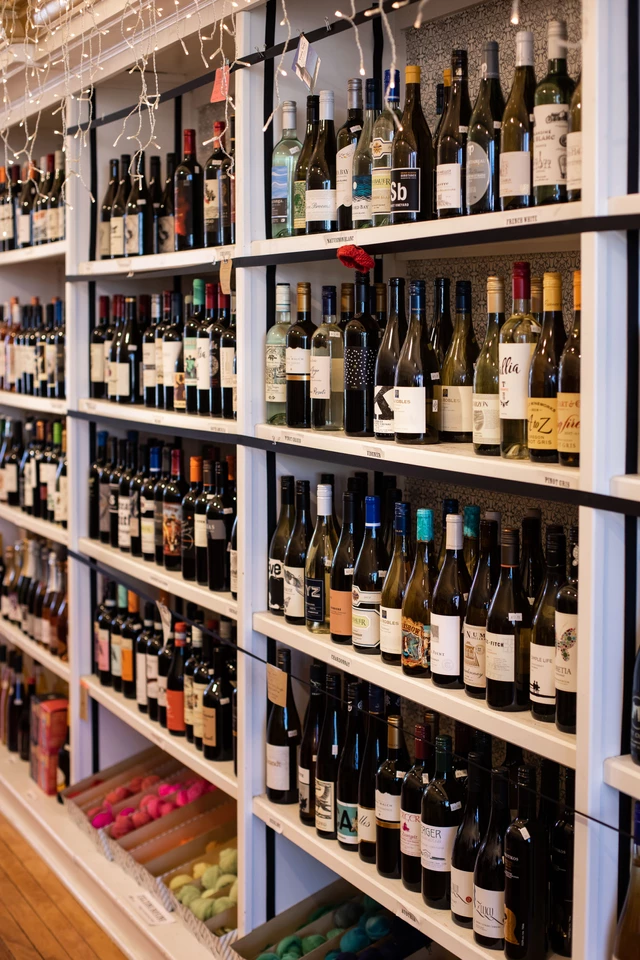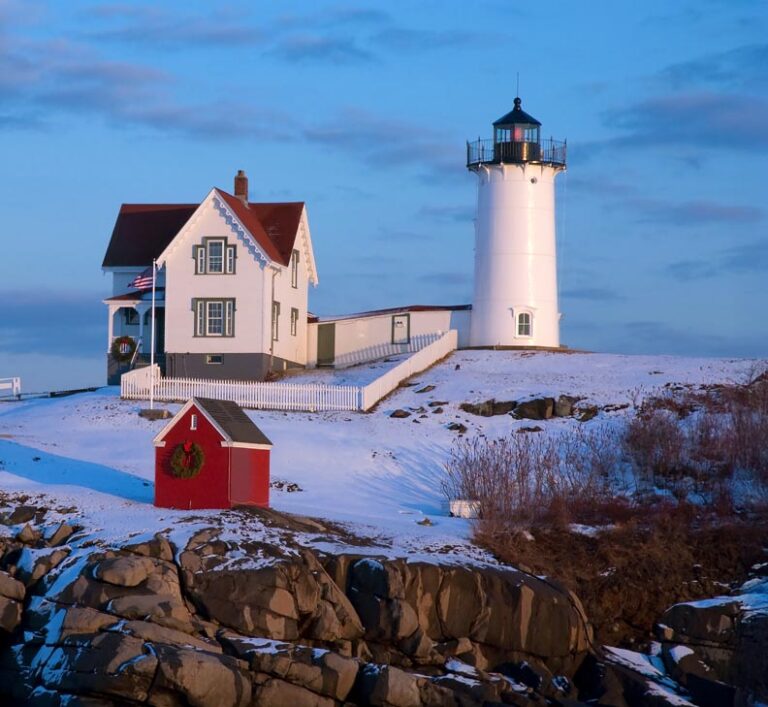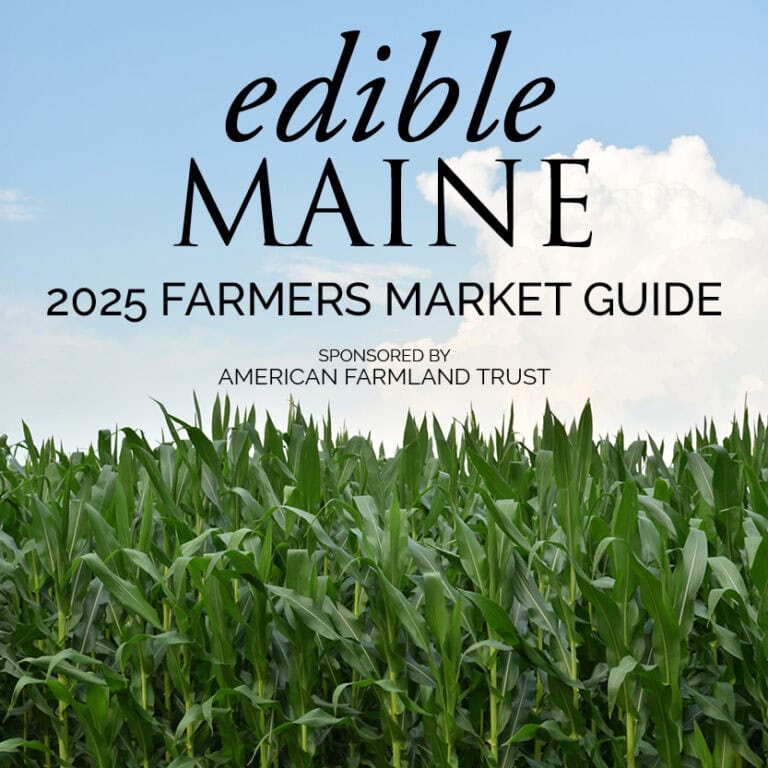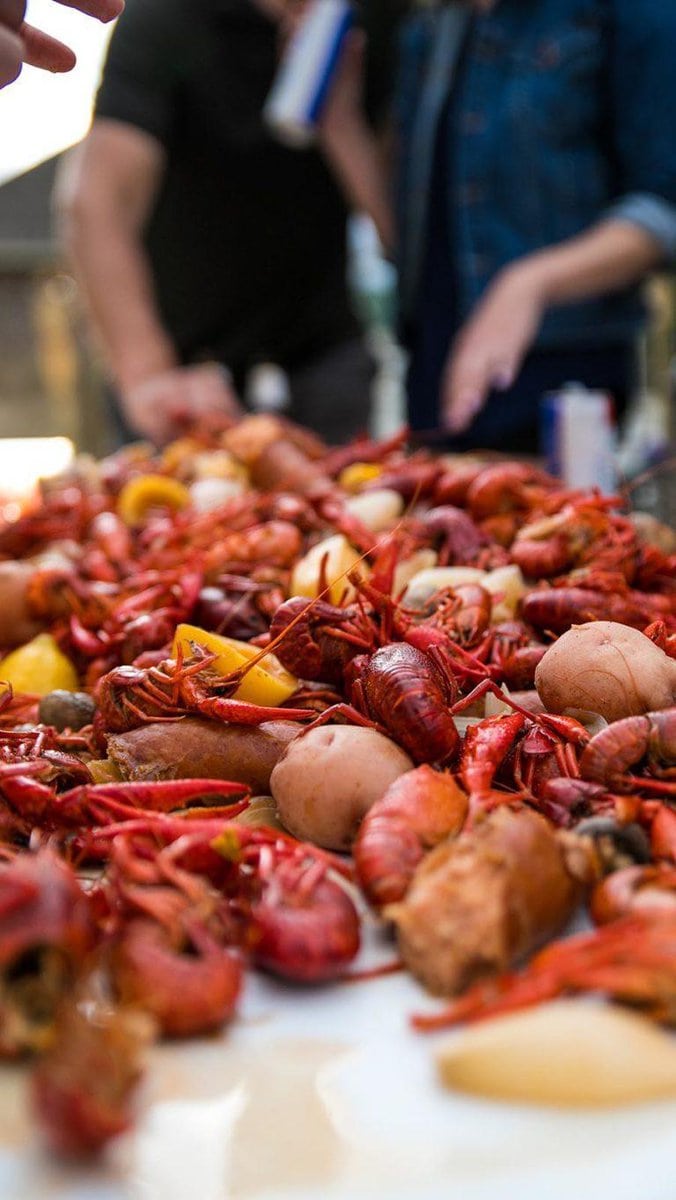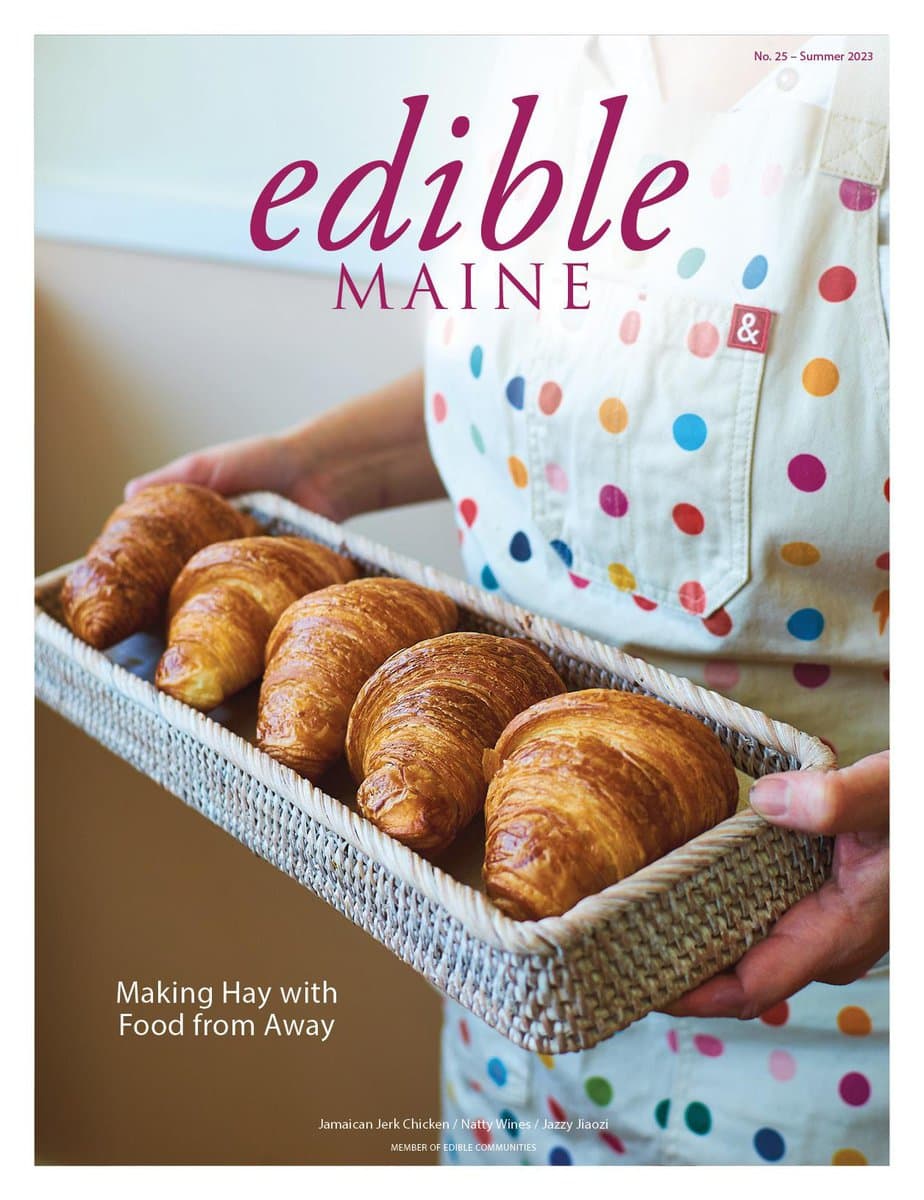Knitting is having a revival. With musicians like Lorde and Harry Styles and actors like Amanda Seyfried and Cara Delevingne using needles to tie knots in yarn in public, Gen Zers supporting the Slow Fashion movement, and social media driving extreme knitting endeavors, this timeless art has become cool again.
In Norway, a quintessential New England village, the main drag has a bookshop, a brewery, a bike shop, eateries, and, since 2013, a combined yarn and wine shop. Fiber & Vine sits in a renovated opera house. Kim Hamlin, a native Mainer, co-owns the shop.
“You can’t just decide to create community from a business plan,” Hamlin says. “It has to come out of an authenticity of interested people coming together and gathering.”

The space is large, vibrant, and comfortable. Yarns from far-away Uruguay and just-down-the-road Nezinscot Farm decorate the left wall; bottles of Barolo from Italy and mead from Maine sit on shelves lining the right one. “Even people who don’t drink or don’t knit will still come in … just for a dose of color,” says Hamlin.
She lived in New York for almost a decade, where designing knitting patterns was among her many pursuits. In 2009, she was drawn back to Maine to find empty storefronts and a community intent on revitalizing its downtown. Hamlin took a job at Café Nomad, an art-filled eatery on Main Street; there she befriended its owner, Scott Berk, with whom she shared a mutual interest in both art and wine. Berk became her business partner at Fiber & Vine.
“It’s been a fantastic business model,” Hamlin says. “I get people who are seeking yarn [who] find us, and people who are seeking a nice bottle of wine [who] find us.” Pre-pandemic, Fiber & Vine hosted regular in-store wine tastings, as well as knitting and crafts classes. She is resuming those events as the pandemic subsides.
“We’re lucky in Maine,” she says, “to have a climate, for now, that supports wearing wool almost year-round!” That statement may be dubious to some who prefer cotton in summertime, but the sentiment captures Hamlin’s unconditional love for wool.
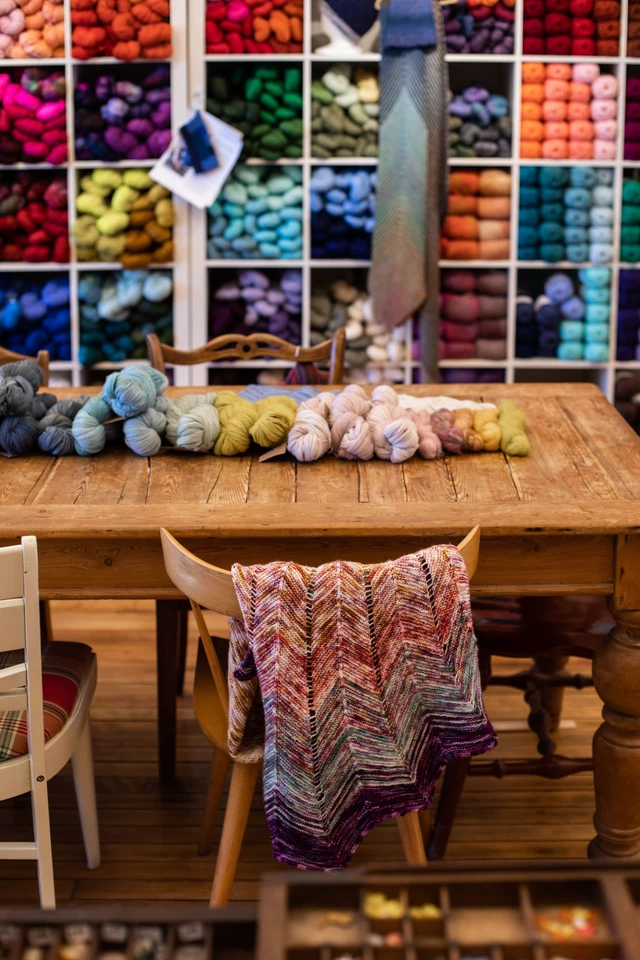
She believes sheep farming is part of a sustainable agriculture system as it can be done on non-arable land, reserving acres with better soil for food crops. Between humans and sheep, she explains, there’s a symbiosis: Humans provide a life for the animals (care, shelter, and land to forage), and the animals provide products for humans (milk, wool, meat, and, historically, bones for tools).
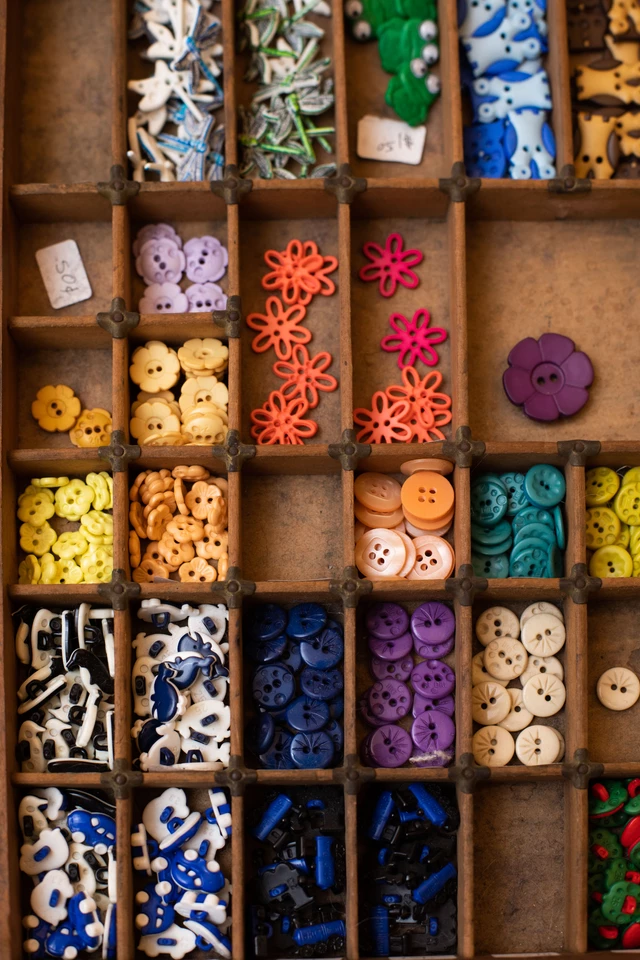
All parts of a fleece are useable—the longest pieces are saved for yarn, and the short off-cuts are used for stuffing and needle felting. Due to its breathability, wool doesn’t need to be washed as often as other fabrics. When it is washed, wool doesn’t shed microplastics into the waste stream as synthetic fabrics can.
And worn-out wool can be tossed onto the compost pile. Then it’s time to knit again—ideally with a nice glass of wine to help you revel in the practice.
